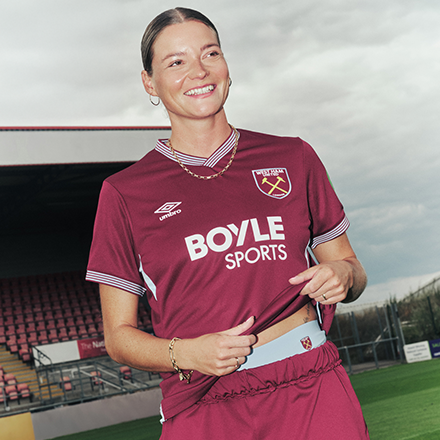Modibodi Ambassador, pregnancy and postnatal fitness specialist Kimmy Smith from the Fit Mummy Project [www.kimmysmithfit.com] knows the importance of having a strong body during pregnancy. Having suffered from incontinence and pelvic organ prolapse after the birth of her first daughter Allegra in 2013, Kimmy has been on a mission to support other women to exercise in a safe and positive way during pregnancy and as they move into motherhood.
In this post, the Mum of three shares her top strength and pilates inspired exercises for a strong and healthy pregnancy.
For complete at-home prenatal workouts + yoga classes for each trimester (pelvic floor safe of course!), check out Kimmy’s website www.kimmysmithfit.com or the Fit Mummy Project App
Why Exercise During Pregnancy?
There are so many reasons why we skip exercise when we are pregnant. Lack of motivation, lack of energy and the constant need to nap just being a few. However, having just given birth to my third daughter, I know just how beneficial it is to be able to feel strong and healthy throughout your pregnancy.
Having a strong body will help to support you as your body expands (or should I say blossoms!). Strong legs, backs and arms will help to support your posture, alleviate some of the pressure on your pelvic floor and core and will help you to have an active birth and labour (if that is what you are planning).
Tip: For a complete overview of prenatal exercise including warning signs and contraindications, check out this post here on “everything you need to know for pregnancy exercise”.
What about the Pelvic Floor? Why is the Pelvic Floor so Important?
Your pelvic floor and transversus abdominis (or deep core muscles) are two of the most important muscle groups to look after during pregnancy. Why? Because they go through so much change during the nine months it takes you to grow your baby. As your baby grows, your stomach muscles will lengthen and weaken as they stretch over your growing uterus. Similarly, as your pregnancy processes and the weight of your uterus increases, your pelvic floor will have an increased load to support.
Caring for these muscles have benefits not just during pregnancy, but for labour, birth and postpartum recovery. Having a functioning pelvic floor and core will help to prevent or reduce back pain, may help to reduce or prevent urinary incontinence, can reduce the symptoms of sciatica and pubic pain can assist in first and second stages of labour and will help you to recover faster from birth! So they are definitely worth doing!
During pregnancy, we want to be able to contract these muscles to support our internal organs, but also be able to release them to allow for the birth of our baby. I always recommend that pregnant women see a women’s health physio for a complete pelvic floor assessment during the second trimester so they can recommend a program to either strengthen your pelvic floor or to release overactive pelvic floor muscles.
The exercises below are pelvic floor safe and will help you to create a functional pelvic floor and core.
The Exercises
Tip! You can combine these exercises into a full body workout by doing 3 rounds of 10 of each exercise at least once a week.1. Squat
A couple of tips to help you make your squat pregnancy-safe.- Keep your weight in your heels (you should be able to wriggle your toes) and keep your knees tracking over your second toes.
- Press through your heels and gently engage pelvic floor and core to help you to return to standing.
- Tuck that butt in. Gently tuck your tailbone so that you aren’t overextending through your lower spine.
- Take your stance slightly wider than hip distance to create space for your baby.
- Don’t go as low as you normally would. The lower you squat the more pressure you are putting on your pelvic floor, so no need to drop it like it’s hot.
2. Bent Over Row
Bent over rows help to strengthen your back, and also gently work your deeper core muscles.
Tips
- Keep a neutral curve in your spine by drawing shoulder blades together (imagine you are holding a pencil between your shoulder blades) and bending your knees to hinge at the hips.
- Avoid rounding your upper back forward.
- Gently engage your belly and pelvic floor by feeling like you are hugging your baby in towards your spine.
- Slow the movement down and really focus on using the muscles between your shoulder blades to lift the weight.
3. The Deadlift
Another great exercise to strengthen your back, but with the added bonus of strengthening your glutes and hamstrings. Deadlifts will help to support good posture and keep you feeling strong.
Tips
- Just like bent over row above, keep a neutral curve in your spine by drawing shoulder blades together (imagine you are holding a pencil between your shoulder blades) and slightly bending your knees to hinge at the hips.
- Create a wider stance to make space for baby.
- Only lower as far as you can whilst maintaining a neutral spine.
- Simply extend through the hips to return to standing.
4. Shoulder Press
A great exercise for toning your arms and shoulders. During pregnancy, the stronger your arms and legs, the more that they can support you in everyday movements.
Tips
- Avoid arching your lower back by gently tucking your tailbone and gently hugging your belly toward your spine.
- Make sure you can breathe normally the entire time.
- Only lift your arms to be in line with your ears.
- Keep the weight light and focus on good technique.
5. Alternate Leg + Arm Raises
A great exercise to gently tone your deep abdominals, back muscles, glutes and even hamstrings. Focus on slow and controlled movements and keeping your shoulders and hips even and stable.
Tips
- Start on all fours with your wrists directly below your shoulders and knees directly below your hips. (You can do this exercise on your knuckles if you have sore wrists).
- Inhale to prepare. As you exhale gently engage pelvic floor and deep core by hugging your baby toward your spine and lifting the anterior wall (front wall) of your pelvic floor.
- Inhale and hold.
- Exhale and slide one leg or arm at a time along the floor and lift to hip/shoulder height.
- Inhale to return to start position.
- Exhale and release pelvic floor and core.
- Repeat with each arm and leg.
6. Side Plank
This exercise works your internal and external obliques. These are the muscles that run down the side of your core and help to support your waist. We don’t want to overtrain these muscles during pregnancy, so I always recommend doing this exercise on your knees and focussing on engaging pelvic floor and core.
Tips
- Set up with your right elbow directly under your right shoulder and your knees stacking on top of each other.
- Inhale to prepare. Exhale and gentle engage pelvic floor and core by imagining ‘zipping in and up’ through your midline.
- Lift your hips into the air so you have a straight line from shoulders to knees.
- Avoid rocking your weight forwards or back.
- Try 10 hip dips in this pose moving with your breath. Inhaling to lower and exhaling to lift.
7. Clams
A great exercise for targeting your gluteus medium which is the little muscles at the top sides of your butt which help with stability and balance.
Tips
- Start lying on your right-hand side with your head supported on your upper arm
- Bend your knees so that your heels are in line with your back
- Inhale to prepare. Exhale and gentle engage pelvic floor and core by imagining ‘zipping in and up’ through your midline.
- Squeeze your ankles together and lift your top knee to just above hip height.
- Be careful not to roll your weight back or forwards to do this movement.
- If you feel this movement in your hip flexor, slightly shift your top hip forward and place your hands on the top of your glutes where you want to feel the movement.
- Open and lower your right knee just like a clam
8. Cat / Cow
This exercise helps to mobilise your spine and release any tension from your back. It’s a great one for the second and third trimester when your back feels constantly tight!
Tips
- Start on all fours with your wrists directly below your shoulders and knees directly below your hips. (You can do this exercise on your knuckles if you have sore wrists).
- Inhale to lift your head and tailbone to the sky. Keep your core lightly engaged to protect your back. As your pregnancy progresses, the movement will get smaller and smaller.
- Continue to move with your breath.
- You can take this movement laterally or into hip circles or figure 8 movements which feel amazing!
General Tips
Every woman is so unique and is so different in terms of what they can and can’t do during pregnancy. We are also so different in what we can do physically from one pregnancy to the next. Please always listen to your body and only do what feels right for you. Please always consult with your healthcare professional, doctor or midwife before starting a new exercise program or continuing with your current exercise program during pregnancy.
It is generally recommended to avoid any crunching movements, any movements that cause you to hold your breath and any high intensity jumping movements during pregnancy.
Caution + Warning Signs!
The above exercises are for normal, low-risk pregnancies. If you have a high-risk pregnancy or have any pregnancy complications please consult with your doctor or midwife before doing any of the above exercises. If you experience any of the following symptoms or signs, stop exercising immediately and consult your doctor or midwife.
- Dizziness
- Chest pain
- Heart palpitations
- Headache
- Shortness of breath
- Swelling of the face, hands or feet
- Calf pain
- Difficulty walking
- Muscle weakness
- Vaginal bleeding
- Uterine contractions
- Cramping in the lower abdomen
- Back pain
- Decrease in foetal movement
- Leaking of amniotic fluid
Bio
Kimmy is a Mum to three little girls and a Modibodi Ambassador. She is the founder of the Fit Mummy Project App and the Nourished Mummy Project App Kimmy is also an ex-professional athlete, fitness instructor and qualified yoga teacher. Kimmy is on a mission to support and empower women to embrace the journey of motherhood. In 2016, Kimmy launched the postnatal fitness and wellbeing hub, www.kimmysmithfit.com, an online destination that encompasses fitness, food and healthy mindset essentials including tips, advice, workouts, meal plans and recipes. It aims to help all new mums create a beautiful, fit and strong new body and life.
Connect with Kimmy:
Facebook: @fitmummyproject
Instagram: @kimmysmithfit
Website www.kimmysmithfit.com






